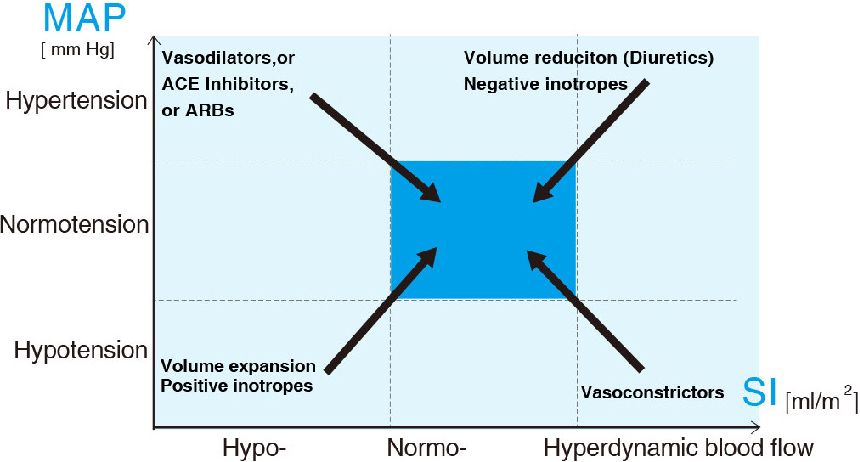
Enable a simpler and smarter way for doctors to prescribe hypertension drugs.
Blood pressure is the most commonly used indicator of cardiovascular function. Hypertension is defined as arterial pressure equal to or higher than (140/90) mmHg, but blood pressure itself cannot fully reflect the overall condition of the cardiovascular system. Hypertension is the result of increased cardiac output, systemic vascular resistance, or both. An in-depth understanding of the basic parameters of the pathophysiology of hypertension is of great value in guiding the diagnosis, prognosis and treatment decisions of hypertension. As a result, we help to:
Through non-invasive cardiac function monitoring, the hemodynamic status of a patient can be determined non-invasively and accurately, that is, to determine the baseline status of the patient's hemodynamics, and to select a drug treatment plan based on experience; and to perform periodic continuous detection of patients during the treatment process Let the doctor know whether the treatment effect is ideal, so as to guide the development of the best individualized treatment plan. Studies have shown that using non-invasive cardiac function parameters as a targeted guideline therapy will greatly increase the rate of compliance with drug treatment for hypertension. This "uniqueness" of non-invasive cardiac function makes it a promising tool for evaluating hypertension treatment.
An advanced approach to reveal underlying causes of hypertension by Dr. Bo Sramek
Different locations of abscissa and ordinate indicate different causes of hypertension. Identifying the causes may lead the cardiologists to make different decisions and prescribe different drugs. Thus, avoiding some drugs which would not fulfill their purpose or would worsen the patients’ condition.
The specialist may make better choices and propose their patients the most benefiting and adapted medication. Treating hypertension by identifying the underlying hemodynamic imbalance allows prescribing a tailored therapy and shortens the initiation and stabilization phases of treatment.


© Sramek Global Inc. 2020. All Rights Reserved.

